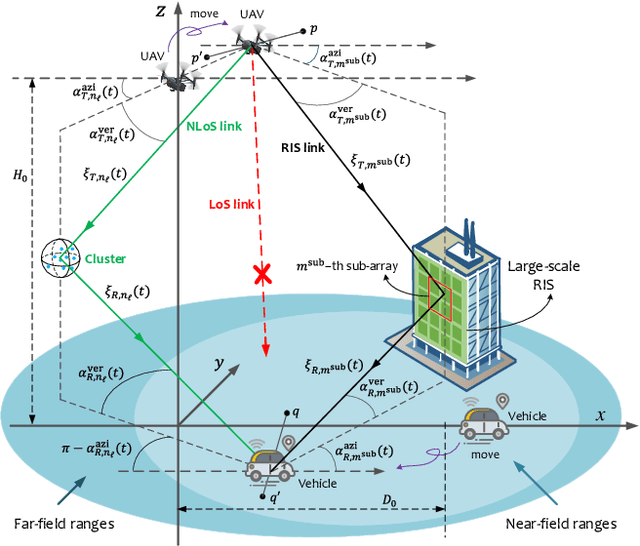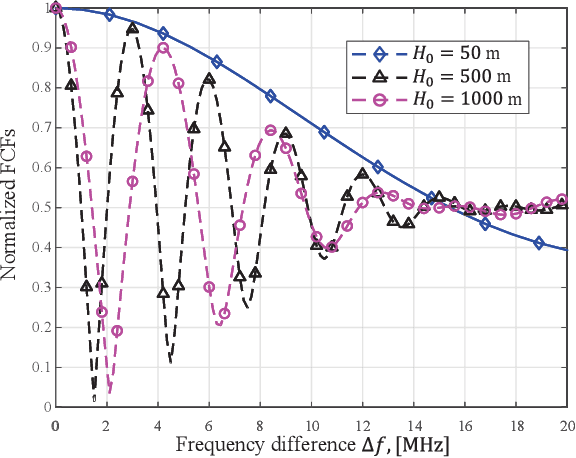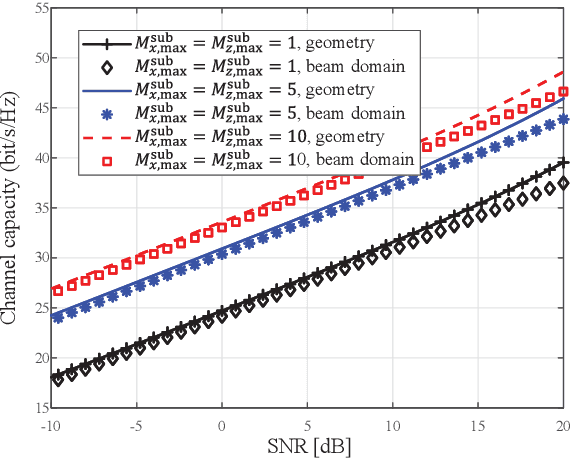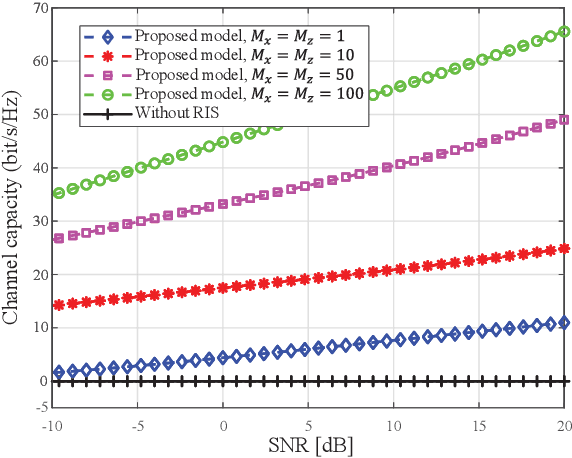Wangqi Shi
High-Efficient Near-Field Channel Characteristics Analysis for Large-Scale MIMO Communication Systems
Oct 11, 2024Abstract:Large-scale multiple-input multiple-output (MIMO) holds great promise for the fifth-generation (5G) and future communication systems. In near-field scenarios, the spherical wavefront model is commonly utilized to accurately depict the propagation characteristics of large-scale MIMO communication channels. However, employing this modeling method necessitates the computation of angle and distance parameters for each antenna element, resulting in challenges regarding computational complexity. To solve this problem, we introduce a subarray decomposition scheme with the purpose of dividing the whole large-scale antenna array into several smaller subarrays. This scheme is implemented in the near-field channel modeling for large-scale MIMO communications between the base stations (BS) and the mobile receiver (MR). Essential channel propagation statistics, such as spatial cross-correlation functions (CCFs), temporal auto-correlation functions (ACFs), frequency correlation functions (CFs), and channel capacities, are derived and discussed. A comprehensive analysis is conducted to investigate the influence of the height of the BS, motion characteristics of the MR, and antenna configurations on the channel statistics. The proposed channel model criterions, such as the modeling precision and computational complexity, are also theoretically compared. Numerical results demonstrate the effectiveness of the presented communication model in obtaining a good tradeoff between modeling precision and computational complexity.
Large-Scale RIS Enabled Air-Ground Channels: Near-Field Modeling and Analysis
Mar 19, 2024



Abstract:Existing works mainly rely on the far-field planar-wave-based channel model to assess the performance of reconfigurable intelligent surface (RIS)-enabled wireless communication systems. However, when the transmitter and receiver are in near-field ranges, this will result in relatively low computing accuracy. To tackle this challenge, we initially develop an analytical framework for sub-array partitioning. This framework divides the large-scale RIS array into multiple sub-arrays, effectively reducing modeling complexity while maintaining acceptable accuracy. Then, we develop a beam domain channel model based on the proposed sub-array partition framework for large-scale RIS-enabled UAV-to-vehicle communication systems, which can be used to efficiently capture the sparse features in RIS-enabled UAV-to-vehicle channels in both near-field and far-field ranges. Furthermore, some important propagation characteristics of the proposed channel model, including the spatial cross-correlation functions (CCFs), temporal auto-correlation functions (ACFs), frequency correlation functions (CFs), and channel capacities with respect to the different physical features of the RIS and non-stationary properties of the channel model are derived and analyzed. Finally, simulation results are provided to demonstrate that the proposed framework is helpful to achieve a good tradeoff between model complexity and accuracy for investigating the channel propagation characteristics, and therefore providing highly-efficient communications in RIS-enabled UAV-to-vehicle wireless networks.
 Add to Chrome
Add to Chrome Add to Firefox
Add to Firefox Add to Edge
Add to Edge